New year, new you, huh? And some of you might have big ambitions in expanding your skill-set and learning how to write code to become a data scientist or data professional.
Well, the most in-demand skill of this decade since we’ve rolled into 2020 is data science – and there’s no slowing down. The data industry will continue to boom as new and emerging technologies disrupt the conventional ways of how business works. But … as an individual, which programming language is most suitable for data science?
Deciding on which programming language for Data Science to pick up can be quite daunting.
It is something like your parents deciding which language to speak to you primarily when you are a child. It sets the future path for you.
Same thing, your first programming language will define your career in data science, and determine the nature of your work in this industry.
As much as we would love to give you an answer that fits all, but the truth is there is no clear cut answer.
But what we will try to do, is to break down a few primary programming language for you to understand it better – so you can make informed decisions as to which one is suited for your needs.
Programming Languages Used in the Industry:
Like every other skill, the demand from your line of work should determine which skill you should learn and master.
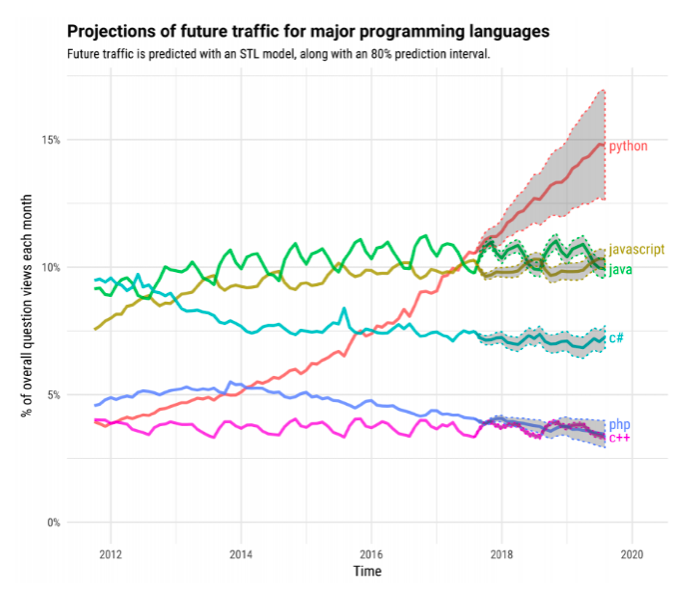
This is the predicted traffic for the major programming languages in the upcoming years; and as you can see, the most sought-after programming language is Python, which has drastically gained popularity in these recent years, and we see will continue to grow in the years to come.
Javascript and Java (both different programming languages) are the next in line, and have been growing steadily throughout these recent years.
To get a better insight of the usage of Python as compared to smaller, growing technologies:

Again, Python’s growth is very apparent, and has tripled in its popularity in these few years, which makes it a very promising programming language to master if you are looking to kickstart your career in data science.
What about the salary ranges?
You probably want to know the salary range that you could attain for your chosen programming language.
Here we explore the average salary ranging from software engineers to data scientists with a Python background:
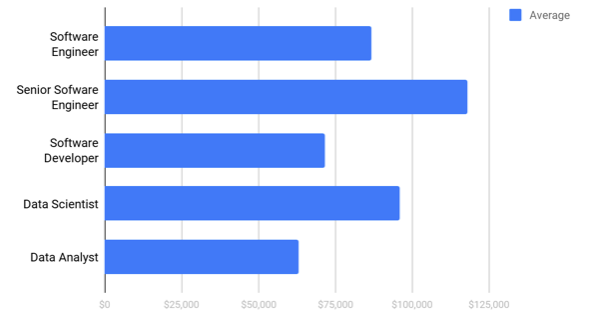
Read More: Data Scientist Salary in Malaysia
Now you know industry demands, let’s go into further breaking down the programming languages. This will help you choose the programming language to learn for your data science career.
Programming Languages You Should Know to be a Data Scientist:
1 – Python
Among the other programming languages, Python is considerably easy to learn. Even if you have no prior programming skills, you are still able to pick it up quite easily.
This is why many data scientist learn Python as their first language, as you should.
Python is also an open source programming language, which allows you to have wide access to libraries, free tools and a strong community that contributes their data for all to use. This helps you access all forms of data for your various projects to practice on as you master the data science process.

Another reason why Python has gained so much popularity is because of how lightweight it is. It allows for fast development, which is great for prototyping ideas.
This would be very helpful for small scale projects like developing small programs that scrap data for data analysis etc.
In general, Python is accessible, and is great for beginners to explore and practice on.
2 – R
Developed by statisticians, R is your solution to statistical computation. It is often used by companies to analyse data, visualisation of data and even machine learning.
In general, R is a very strong language when it comes to mathematics, modelling and complex calculations.

So if you are looking to work on data science projects that involves more calculations and statistical data, R would be a very suited programming language for you to master.
The downside of the R language, is that it is not as intuitive as the other popular programming languages out there, and would require you to develop more commands along the process before your data is filtered and analyzed.
3 – Javascript
Javascript is the only programming language that can run on both frontend and backend development. For frontend, you will be using Javascript to run HTML and CSS, and on the backend, you will use it to run Node.js commands in your own servers. On top of that, with the newer technology, you can actually run server less codes with Javascript.
To top it all off, Javascript is the only language that web browsers understand. No matter what devices you are using, be it mobile or desktop, or even TVs, and across plugins that you are using for Google Chrome etc, it is all written in Javascript.
Hence, if you are interested to become a full stack developer or even to explore both frontend and backend at the same time, Javascript would be a great choice.
Additional: Javacript frameworks that helps you to draw beautiful and interactive charts:
- D3 JS (Data Driven Documents):
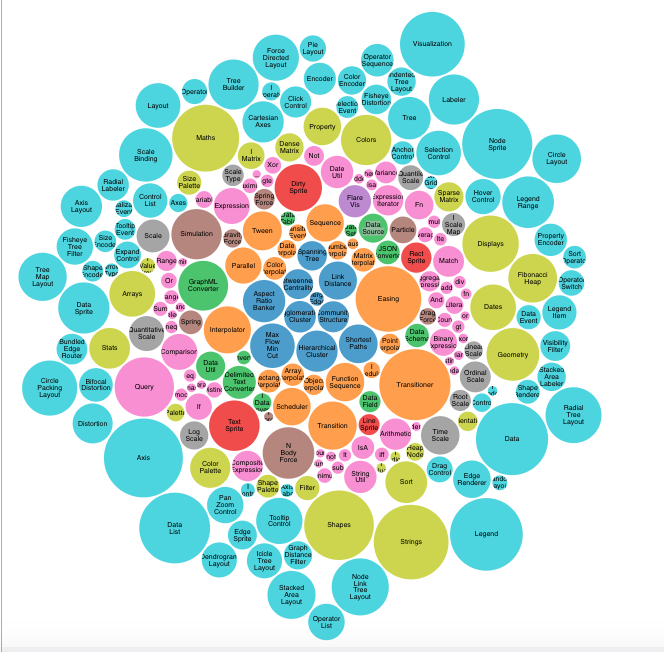
- It allows you to create aesthetic and interactive charts on top of your typical pie charts, bar charts etc
2. Highcharts
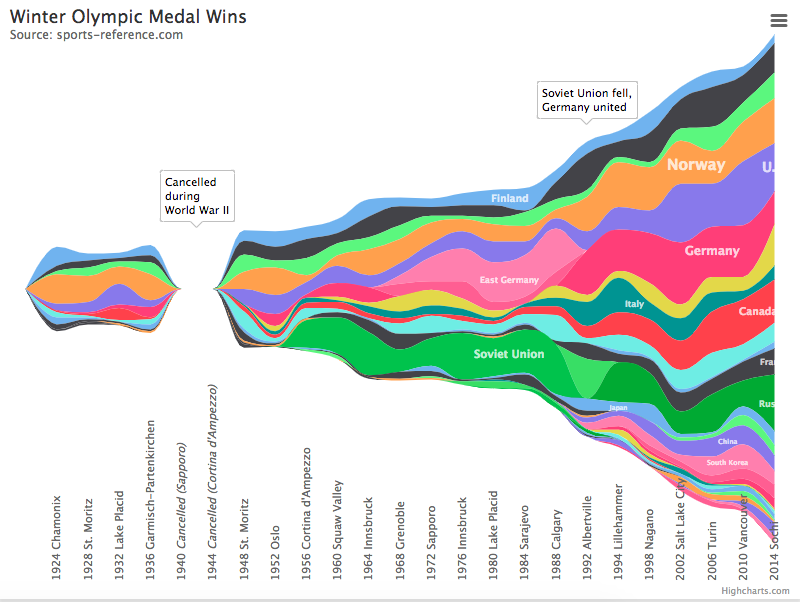
- This is great if you are looking to create more mainstream and organised charts
- It is highly customisable, which allows you to play around with the charts with different themes and colours
Additional Programming Language to learn an added advantage:
As a data scientist, it’s never a bad idea to know more programming languages – knowing more makes you more indispensable.
1 – SQL (Structured Query Language)
In every database management system, there will be 4 key operations:
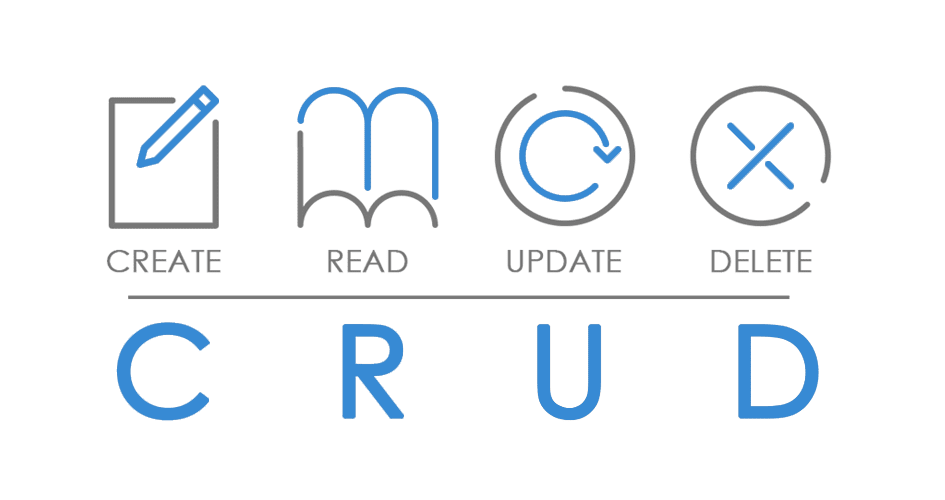
In order to carry out these operations, you will need to use SQL throughout these 4 processes.
SQL is the standard language for Relational Database System (RDBMS), where you will use it in MYSQL, Postgresql etc.
If you are using RDBMS often, or similar database like Hive in Hadoop, it is compulsory for you to learn SQL in order to interact, perform management and commands.
SQL is also a declarative language, which in layman’s term, refers to a programming paradigm that expresses the logic of computation without describing its step by step flow.
In short, this means that the language simply tells the program WHAT to do, as compared to HOW to do it. This can actually bring added advantages such as a chance to minimize errors in the process of coding.
Key Takeaway:
If you are deciding which programming language to learn for data science, the top choices would be Python or R.
If you come from a programming or computer science background, Python would be a great fit for you as it is easy to understand, helping you shorten your learning curve.
If you are a 100% beginner, we recommend you to learn Python as well, as when you are learning the language, you are able to strengthen your knowledge and skills in programming, such as programming concepts, data structures, algorithms, Object oriented programming etc.
Of course, the ultimate advantage of learning Python is that it can be used across platforms such as Windows, Mac, Raspberry Pi.
On the other hand, if you are someone from a statistics or mathematics background, then R would be more suitable.
If you are interested to tap into full stack development, covering both frontend and backend programming, Javascript would be a good language for you to start.
If you are a aspiring data analyst or scientist, learning SQL is crucial for retrieving data as and when you need it, without having to seek for external help from data engineers each time. With SQL knowledge, it can help to speed up your work and help you to complete projects more efficiently.
However, no matter which programming language you choose to learn, practicing on real-life examples is the best way to explore and master it. Start with simple cases, and slowly work your way through to more challenging ones so you can learn progressively in your data science journey without feeling demotivated.
If you are interested to learn more about programming, or if you aspire to become a data scientist, LEAD offers a complete data science course in Malaysia that is designed to equip you for a career in data science within 8 weeks.
What are you favourite programming languages for data science? Leave them in the comment section below.
Don’t forget to visit us on Facebook and subscribe to our YouTube channel for more interesting content too.



0 Comments
Trackbacks/Pingbacks